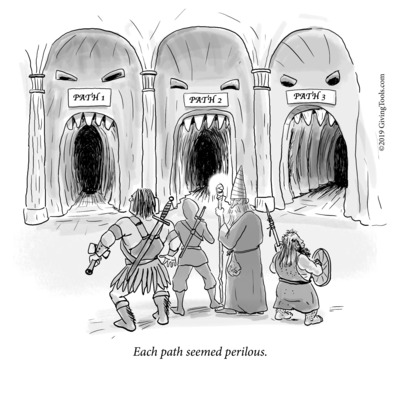
Dear Tuppence,
My nonprofit is considering a capital campaign. We need to raise $250,000 to renovate our headquarters. Should we just make a brochure with $250,000 as the goal?
—Esmeralda
Esmeralda, first, let me say that I love your name. It is like the purr of a cat, and while I personally detest cats, for some reason, I find your name to be soothing. Perhaps my new dog bed has given me a fresh perspective, as I slept extremely well last night.
Now, to your question.
Many nonprofits struggle with the question of what capital campaign goal is right for them.
Strategically, the goal you initially envision may be too high...or it may be TOO LOW. Traditionally, a feasibility study would be a wise step to gauge support from potential donors, create buy-in, and enable you to set a goal (and project scope) that is attainable. A feasibility study tends to increase giving because before being asked for money, people like to be asked their opinion. And that input will help you hone your message and your goal.
It is important that you set a goal that is achievable within a 3-5 year pledge period. Traditionally, 80% of your gifts will come from 20% of your givers and 20% will come from the remaining 80% of givers. Knowing what those lead givers will give and asking them for the right amount is helpful. As we say, you want to ask the right person for the right amount at the right time. Otherwise, you might be leaving potential resources on the table.
Moreover, people give to people for people...so organizing your endeavor so that peers approach peers for support is more effective than a blanket mailing or email campaign.
If you are seeking a substantial sum to launch a major endeavor, a study could help. Professional organization of your approach to reaching your donors helps, too. A professional fundraising consultant with specific experience in conducting capital campaigns to your sort of audience (church/community/regional/etc.) is not an unwise move.
You can of course conduct some form of feasibility study yourself. How confident you can be in the results of the study—and the goal it projects—depends on the quality of the study, so keep this in mind.
If you choose to just use your best judgement, be sure to pick a goal that is both attainable but also not timid. AND consider soliciting major gifts quietly so that when you announce the effort, you already have 25%+ committed. People like to give to an effort with momentum behind it!
GivingTools is unique among online giving systems in that we have an appeal specifically for capital campaigns, called a Campaign Pledge appeal. This appeal type enables donors to enter a campaign pledge and how often they’d like to make payments; the system automatically calculates the payments and bills them on schedule. (This is unlike most systems, which only allow recurring gifts). You can also enter traditional gifts into GivingTools so that donors receive a receipt just like their online giving peers.
Good luck, Esmeralda!